Important Lessons About How to Start a Denim Brand, Told by an Industry Veteran Who Did It Himself
One of the main reasons companies hire young people, I guess, is that we (usually) have a lot of drive. We’re willing to put in the long hours and do the dirty work. Especially if we’re genuinely passionate about what we do. The downside is that we don’t have a lot of experience. We need our Yodas.
If you dream about having your name on a pair of jeans—or if you already reached that goal but still think you could improve—my advice would be that you find yourself a mentor. Someone who can teach you everything you should and shouldn’t do.
That’s what this article is: a lesson for aspiring and young denim designers, and other young guns who want to make it in the denim business. The article flips through three decades of denim seen through the eyes of someone who not only experienced it first-hand but also played a role in how our industry has evolved.
Your teacher today is my good friend Mats Andersson, who co-founded and owns Indigofera. Mats is a seasoned veteran with 30 years under his belt as a retailer, wholesaler and brand owner. He’s from a different generation of denimheads, and he remembers stuff I have to read to understand. He’s someone I truly admire. Not only because of his accomplishments, but also because he’s a genuinely cool and nice dude.
The Way I Discovered What Makes Indigofera Special
Since I got my first pair of Indigofera Clint jeans in 2013, I’ve been a fanboy.
I didn’t quite get the brand when I first got into raw denim, although I had a Norris flannel shirts from one of their very first collections. But why were the jeans so expensive when they were made in Portugal? Why didn’t they have chain-stitched hems? What was so special about them?
Today, I get it.
I’ve come to cherish all the finer details of Indigofera jeans: the off-set back belt loop of the Clint, the logo label on the right back pocket, the angled v-stitching details throughout the jeans, not to mention the fits.
It’s not everything I’m raving about, though. I have come to like the lock-stitched hems, which I now wear exposed on my double cuffs with pride—yet I still think the roping that an old Union Special makes is one of the most beautiful parts of the fade.
But the thing I love the most about my Indigoferas is the denim, especially the No. 2 shrink-to-fit. In my humble opinion, it’s one of the most beautiful denims out there. You have to wear in the jeans to really discover this.
What you’ll learn from the talk I had with Mats is that it’s no coincidence what denim goes into his jeans. This is his story. Get ready for some serious knowledge-dropping.
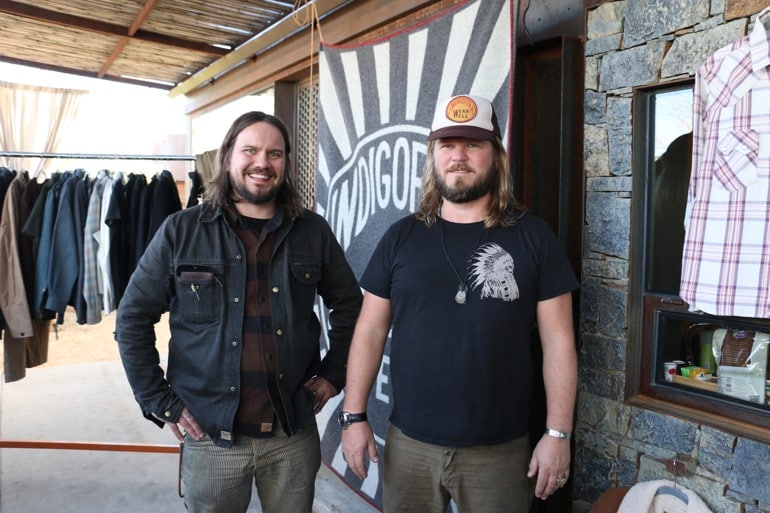
How 20 Years in the Business Led to Indigofera
To understand any denimhead, you need to start at the beginning; the first pair of raws.
Mats has been wearing raw denim for as long as I’ve been alive! Longer, even. Growing up in Sweden in the 1970s, Mats wore unwashed jeans because it was the only thing available. In the mid-1980s, when he was in his very early 20s and worked in a JC store in Malmo, he bought his first pair of raws himself.
Mats:
The first pair of raw denim jeans I bought consciously was a 501 shrink-to-fit. And these things were not in the stores in Sweden. I contacted Levi’s and asked them if they had something in stock. And they did.
So, me and my childhood friend, Micke Felt of ROOKTOWN—who was working in a department store in Malmo back then—each ordered a pair of unsanforized 501s. They were hairy bastards, you could almost shave them; it was a ring spun and open-end construction.
They were not made of selvedge denim. But you have to remember that, back then, selvedge was not something you cared that much about.”
Although Mats was a waist 32”, he got the jeans in size 38” and, of course, too long.
We kind of liked that they were way too big for us. We had on our white Converse and white Hanes tees, and we thought we were pretty awesome,” he nostalgically recalls.
Now, talking about shrink-to-fits, especially ones that are purposely bought to be shrunken down, inevitably leads the discussion to how to wash.
These days, how you wash and shrink your jeans is something we denimheads love to argue about. 30 years ago, the attitude was a little more relaxed.
I don’t actually recall if we shrunk them in a bathtub or if we just jumped in the ocean or something. But we definitely did something; they were way too big to wear, even after they’d shrunken. I think that was also the style then. It wasn’t supposed to be tight like many jeans are today.”
From Retail to Commercial Director for Levi’s Vintage Clothing and Levi’s RED
From this point forth, Mats was hooked on denim.
In 1993, after some five years in JC, where he worked with brands like Replay, Diesel and Chevignon, Mats got a job as a buyer in one of the SOLO stores, which was the leaders of jeans retail in Sweden back then.
We were selling stuff like the Old Glory collection from Diesel. And they were doing remakes of old stuff, like old Levi’s, old Lee, old Wrangler garments.”
After working in retail for a decade, he made the natural transition into wholesale.
I got a job as a sales guy for Levi’s in 1997. Of course, that was a dream come true. But it was also in the mid-90s that Levi’s was at its worst in terms of the product.
They had changed from the iconic 80s 501 to the, well, nowadays more popular tapered 501. But in the mid-90s that was like swearing in the church.”
With sales going down the drain, it was a trial by fire for the Swedish denimhead, then in his early 30s. It didn’t make things less frustrating that he was witnesses new brands emerging that were doing the ‘right’ thing, having the ‘right’ fit, the ‘right’ denim while Levi’s was struggling.
By the end of the 1990s, finally, Levi’s decided to do their Levi’s Vintage Clothing brand, as well as Levi’s RED. This was when they started being innovative. I was lucky enough to be part of that process.
By 2003, Mats had advanced to a position where he was overlooking sales in Europe for Levi’s Vintage Clothing and Levi’s RED. That’s when he really started learning about how to make jeans.
They called me ‘commercial director,’ but I don’t know if that means anything to anybody.
I was travelling all across Europe hanging out with these great people that had denim stores. I also worked in Brussels with the designers and the product managers, getting my head into that and understanding what they were doing.
It was amazing times and they were really pushing the limits of what could be done in the industry.”
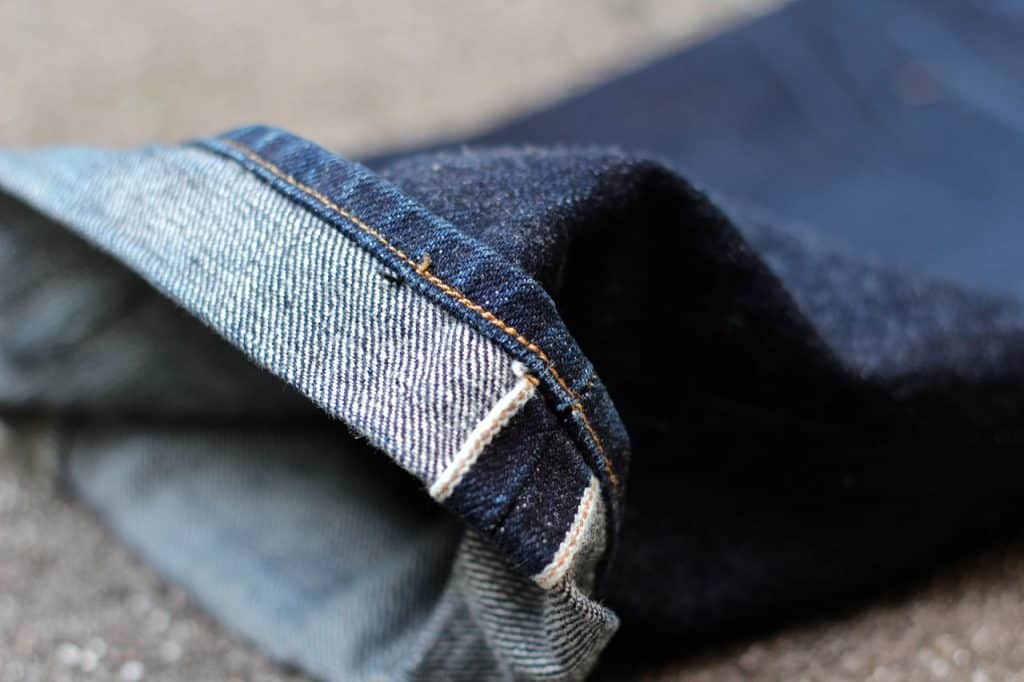
Pre-Indigofera: The Grocery and Cheap Monday
By the end of 2004, Mats quit his job at Levi’s. He founded his own company, The Grocery, which is the agency and distribution company that he still runs today. It’s through The Grocery he has done all his different projects. It was at this time he started planning what would later become Indigofera.
But before Indigofera, Mats had his hands deep into the mould of yet another revolutionary period of modern denim history.
TSB:
You’ve told me previously that The Grocery got its start with Cheap Monday?”
Mats:
Yes. I built my distribution company with two brands. One of those was Cheap Monday. At the time, the brand was all about clean, cool rock ‘n’ roll jeans for a nice buck. The other brand was Edwin.”
While Edwin Europe was challenging brands like Levi’s Vintage Clothing with a growing European collection and a selection of Japanese wares, Cheap Monday was an entirely different story.
Cheap Monday was more of a rebel; more fashion and rock ‘n’ roll, and all about attitude. It was not so much about construction or making things in the ‘right’ countries or with the ‘right’ fabrics.
The goal was to make affordable jeans for people who were tired of the overpriced market in a time when even cheap jeans had become expensive.”
The strategy that they came up with was to target high-end consumers and position the brand in exclusive stores. It was provoking and pretty unseen at the time. I remember myself how cool us kids in the mid-2000s felt Cheap Monday was. And, of course, they sold like crazy.
All of a sudden, instead of buying one pair of LA-jeans, they could get four pairs of Cheap Mondays. And you would be the cooler guy.
We used to say, ‘we make cheap cool.’ Up until then, cheap was just something that people looked down on.”
Reminiscing about those early days of what would become a global mega-brand a few years later when H&M bought Cheap Monday, you can’t help but feel that Mats is, rightfully so, proud of his work. And that he has had a lot of fun along the way.
It was refreshing for me to work with something that is not all about heritage and looms and all that.”
The Start of Indigofera and Changes in Denim Fashion
In 2007, Mats and his former business partner, Johan Söderlund, began working on Indigofera. By spring 2009, the first products were delivered to stores. But, before they could celebrate that achievement, they had to do a lot of explaining what the brand was all about.
Mats recalls vividly how it certainly wasn’t everyone who understood what they were doing back in 2009.
One question I still remember we got from press when we launched Indigofera—because Sweden is famous for its denim brands—was, ‘so, why do you do another denim brand when there’re so many denim brands in Sweden?’ And I said, ‘which ones do you mean?’”
Indigofera clearly came out in a different climate where there wasn’t a lot like it. Since then, the market has changed.
Right now we live in the best of times. There’s quite a few brands from Japan, a couple in Europe, a couple in the US, that do really great products with great fabrics. But that was not the case ten years ago.
There were good brands in Japan, but they were just not in Europe or the US, for the most of it. The whole era from 2005 to 2010/2011 was more about fashion. A lot of tight jeans. A lot of inauthentic wear—it wasn’t about authentic wear like today.”
This is where denimheads are allowed to pad themselves on their shoulders for having been part of this change.
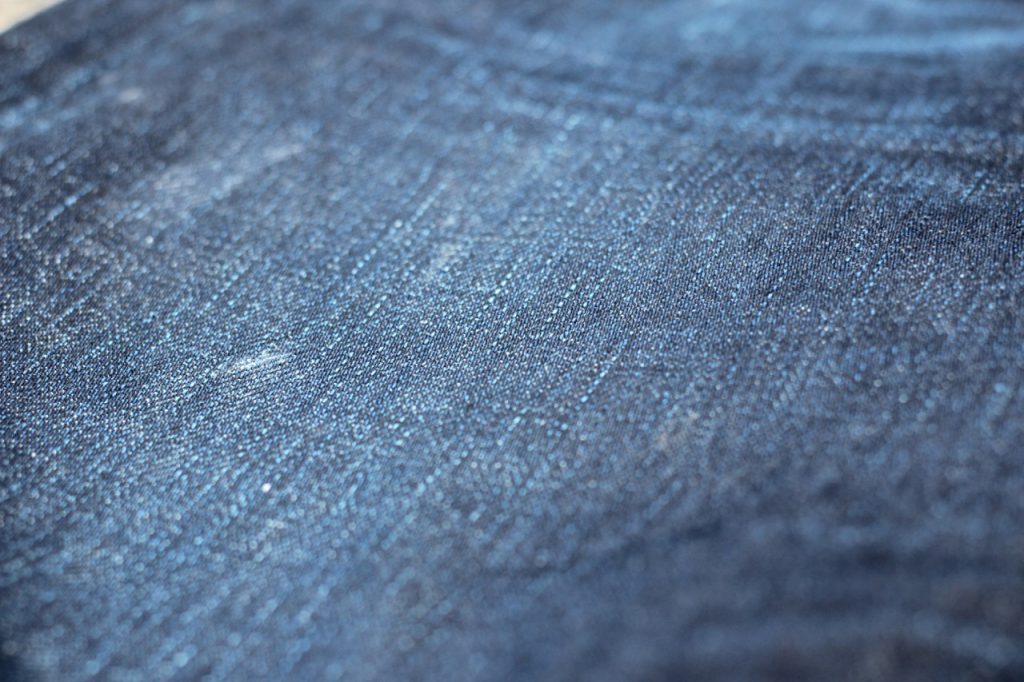
It’s All About the Fabric In Its Entirety
How do you start a brand?
For Mats, the first step in developing Indigofera was to find the factories they wanted to work with who could supply the fabrics they wanted. And that meant going to Japan.
There’s this idea we had in the beginning—and we still work with that every day—’it’s about the fabric.’ That’s where it starts for us.”
Indigofera was not the first brand to focus on their denim. What differentiated the new Swedish denim brand in 2009 was that they looked at the fabric as a whole. Not only the selvedge edges.
Selvedge is a nice and cool thing, and normally fabrics made on narrow looms are better. But, in the end, you don’t want to look at 1% of the fabric to determine if you want that jean or not.
We actually did a lot of really great fabrics in wide looms. And it kind of worked. But when we went to selvedge fabrics only, it worked better; I guess that’s just how the market is.”

The Nihon Menpu Connection and €1000 Jeans
To source their fabrics, Mats and his ex-partner went straight to one of the most reputable mills in Japan, Nihon Menpu. They got their foot in the door through Levi’s as they’d worked with the mill for the Levi’s RED collection.
Mats:
We went to their mill and had meetings with President fo the mill, Mr. Shinja Kawai. It was one of those moments where you sit down and realise that it’s happening. Now you’re doing it.”
For the very first Indigofera collection, together with Nihon Menpu, they developed their Norris flannel as well as the infamous Natural Indigo jeans, which retailed at €1000.
People thought we were crazy,” Mats laughs.
That fabric later evolved into the gorgeous No. 2 denim, which is similar but made with chemical instead of natural indigo. They also developed the No. 9 denim, which, like the Norris flannel, is still in the collection.
We’ve done three, four, five new fabrics with Nihon Menpu every year, whether it’s a new colourway of the Norris, shirting fabrics like the flannel for our Dawson shirt, or something like the wool-cotton fabric we use for our poncho.”
Why Indigofera’s Denim Comes From Japan
Japanese denim has earned a reputation as the best in the world. These days, the nation brand has become so strong in the public conscious that fast fashion retailers like The Gap and Topman use it as an added value when they sell jeans.
But what is it that’s so special about denim made in Japan?
Mats:
If you look at Japan historically, you’ll understand why the good factories there are just better than anywhere else in the world.
Look at their tea ceremony. Look at how they build their electronics and their philosophy of running companies. Look at the little bonsai trees they have and cultivate.
It’s a culture where, if you’re going to do it, you do it really well. And the ones that are doing it really well, they just become amazing. After a while, they’re more like artists.
When I visited Japan in 2015 with my wife, I immediately noticed what Mats is talking about here.
The Japanese are extremely proud about what they do, and they take attention to detail to a whole other level. Where else than Japan would you find a display of food made from plastic that looks this real. They even added tiny flakes of plastic salt and pepper on to of the egg!
And it’s not just that the Japanese care about getting the details just right; it’s not only about reproducing, they also strive to improve and develop. That’s what Mats experienced at Nihon Menpu, at least.
When we go to Japan and we sit down with Nihon Menpu and say, ‘We have a challenge for you,’ they shine up like the sun.
The first time we went there, we were invited to their conference room. We came in and, of course, we had to take our shoes off and we sat on the floor.
They had samples of everything they’d over done, all the fabrics they had ever developed. Which is like a gold mine, of course. And then one of them said, ‘You can have a look, but you cannot copy. Only be inspired and then challenge us.’”
Why the Garments Are ‘Made in Portugal’
While the exclusively developed denim is from Japan, Indigofera garments are cut and sewn in Portugal, except for the blankets, which are made in Norway, and a few accessories that are made in Sweden.
Now, that may make some put on a pout—I’ve been guilty of that myself, remember. Honestly, that’s just snobbery, probably grounded in the assumption that ‘Made in [insert first world country here]’ is better.
After wearing a handful of different Indigofera jeans over the past three years, I can attest that they certainly don’t hold up any worse than the American- or Japanese-made jeans I own. In fact, on several occasions, it’s been the opposite. And in terms of the craftsmanship and attention to detail of the sewing, I don’t see much difference.
Of course, the choice of producing in Portugal was not coincidental for Mats.
Our idea was to produce in Europe. We don’t have borders, there are no internal taxation, and it’s relatively easy to travel.”
This all makes production easier, faster and less costly.
Portugal is still an affordable country to produce in. It is, of course, more expensive than if you go to Africa or Asia. But you go there and you see it’s Portuguese seamstresses who live in the village nearby. They are having minimum wages, they have proper ventilation, they have lunch breaks. It’s not a sweatshop.”
Another upside of producing in Portugal is that they have plenty of vertical production. If you like, you can go there and find your labels, your denim, your canvas, your sewing, you can wash it, you can treat it, you can package it. You can do the entire product and you don’t have to leave Portugal.
We go to our denim factory, we go to our knitting factory, we don’t wash a lot but we go to the laundry—everything is within one hour of driving.”
Advice for Denim Designers About Developing and Choosing Denims
Now, this lesson wouldn’t be complete without a few pieces of advice that you can go out and implement yourself.
So, I asked Mats how he would advice someone who wants to develop or choose a denim to put in their jeans.
Mats:
Of course, you have your personal taste about what you like. After working in the industry for a long time, I’ve have seen different fabrics come and go.
Personally, I look at whether I think it’s something that will stand the test of time. Something that doesn’t seem dated.
What this translates into is that the fabric shouldn’t be ‘too fashion,’ in the lack of a better explanation. If it sort of jumps on you, it’s ‘too fashion’ and you might not feel comfortable in it two years down the line.
The 4 Factors: Look, Feel, Purpose, Cost
Mats points out four main factors you have to consider when you’re developing or choosing a denim:
- First of all, there’s how it looks: how it fades; how blue it is; how it’s casted.
- Next, ther’s how it feels to wear.
- Then there’s the purpose of the product you put the denim into, and how that product is constructed and what it looks like.
Anybody can go and do a 22 oz. denim and put that in a jean, but is it going to look good? Is it going to feel good? What’s the purpose? I’m not saying that is not a good jean, but it could be very uncomfortable, heavy and warm to wear,” Mats reasons.
- And, finally, there’s the price.
Mats’ Own Favourite Denim
Now, of course, I had to end my talk with a guy who’s so focused on the denim of the jeans he makes by asking which one is his own favourite.
Mats:
That’s like asking which kid of all your fifteen kids do you love the most. I really love the jean I put on every morning that I feel comfortable in. And sometimes that’s the No. 2, sometimes it’s another fabric.
It depends on what I’m up to that day. Am I going to ride my bike? Am I going to go on a hike? Am I going to go into a bar? It all depends.”
TSB:
Let’s end on you loving all your fabric ‘kids.’”

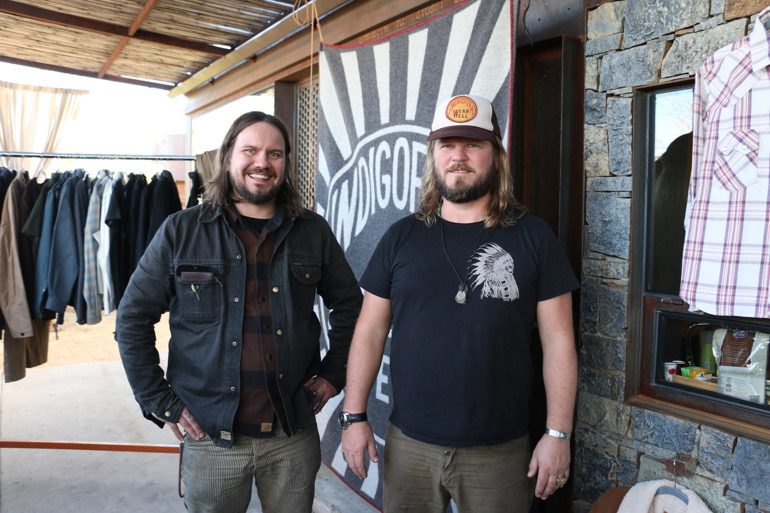

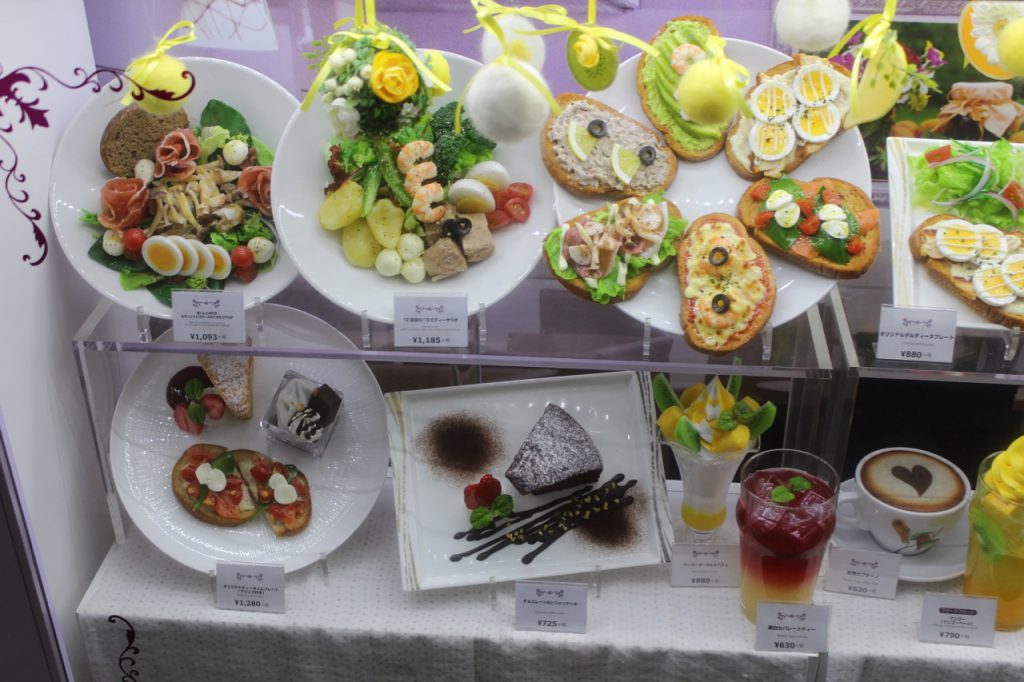



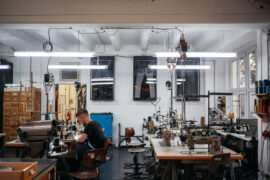

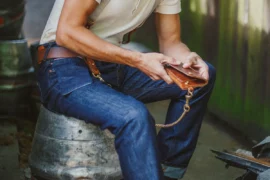
3 Comments
Awesome lesson and history about the brand!!!
Love it
Thanks Ruedi! 🙂
great read Thomas!